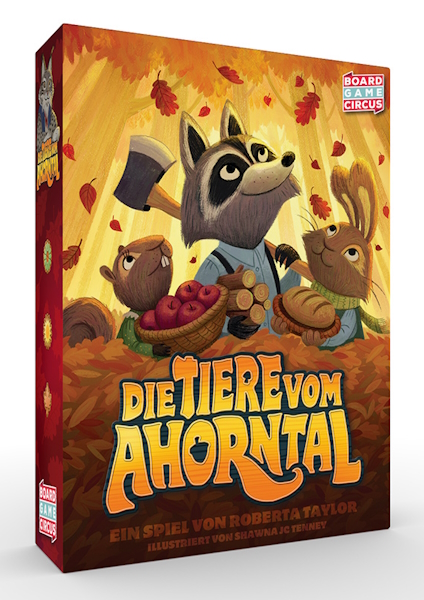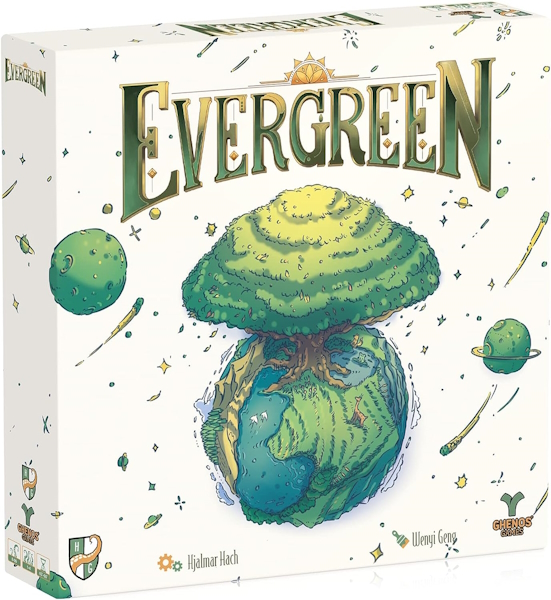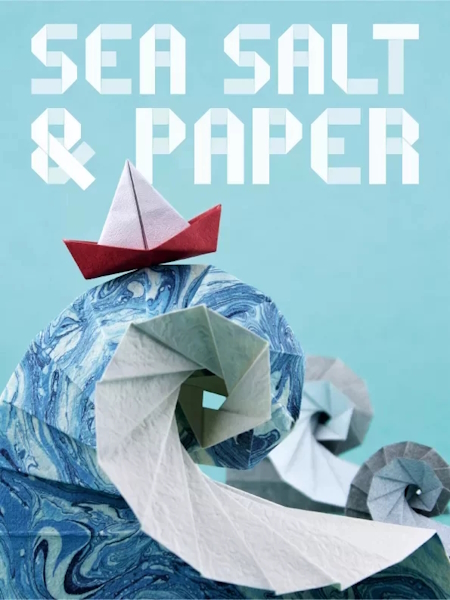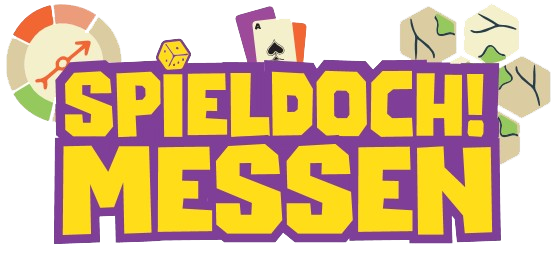03.08.2023 - Beim Spielegrafik-Preis Graf Ludo der Leipziger Messe modell-hobby-spiel hat sich das Teilnehmerfeld weiter gelichtet: Von der Ende Mai veröffentlichten Auswahlliste wurde erneut die Hälfte der Titel ausgesiebt, sodass nun noch drei Nominierte in der Endrunde für die beste Grafik in Familienspielen sind.

Eines davon ist Roberta Taylors Die Tiere vom Ahorntal, illustriert von Shawna J.C. Tenney und erschienen bei Board Game Circus. Die Jury begründete ihre Wahl so: "In üppigen Bildern schildert Shawna J.C. Tenney das Leben im Ahorntal. In der Dominanz von Brauntönen, die den Herbst anzeigen, wirkt die Atmosphäre warm und heimelig. Sogleich verspürt der Betrachter den Wunsch, der lustigen Truppe freundlicher Tiere zu helfen, für den Winterschlaf vorzusorgen. In vielen Details lässt uns die Illustratorin teilhaben an der aufregenden Welt der fleißigen Waldtiere. Das Gesamtkonzept fördert die Spiellaune: Typografisch hervorragend, farblich überzeugend, nicht überladen und alles konsequent durchgezogen von außen nach innen – Box, Anleitung und Spielmaterial."

Zweiter Finalist ist Hjalmar Hachs Evergreen mit Illustrationen von Wenyi Geng, erschienen bei Heidelbär Games / Horrible Guild. Hier lautet die Jurybegründung folgendermaßen: "Wohltemperierte Farbflächen strahlen Wärme, Hitze, Kühle oder eisige Kälte aus. Zwischen saftigem Grün und drohender Trockenheit entwickelt sich ein Spiel, das komplexes Denken fordert. Mit zartem Strich zeigt Wenyi Geng eine sensible Natur in ihrer Abhängigkeit von der Sonne. Das Spiel wird durch feine Symbole gelenkt, die den Eindruck von Zerbrechlichkeit stärken. Im Zusammenspiel mit dem haptisch auffordernden Material unterstützt die Grafik das Ansinnen, gut überlegt und vorsichtig zu handeln, damit der eigene Planet grünen kann."

Eine weitere Nominierung verdiente sich Sea Salt & Paper von Bruno Cathala und Théo Riviére, illustriert von Lucien Derainne und Pierre-Yves Gallard, veröffentlicht bei MM-Spiele. Die Jury kommentierte, Sea Salt & Paper habe einen optischen Fokus, der durchaus kontrovers diskutiert werden könne: "Unbestritten geben die ungewöhnlichen Bilder dem Spiel aber eine besondere visuelle Note. Zuerst haben Lucien Derainne und Pierre-Yves Gallard Origami-Figuren geschaffen, diese danach fotografiert und der Gestaltung des Kartenspiels zugrunde gelegt. Hintergründe und Farben unterstreichen die Wirkung der Skulpturen und die gelungene Verbindung lässt uns in grafisch neu interpretierte Wasserwelten eintauchen. Die darauf abgestimmte Typografie und Symbolsprache (u.a. eigene Icons für Farbenblinde!) tragen dazu bei, das kleine Kartenspiel als extrem frisch wahrzunehmen."

Ungewöhnlich ist, dass es von den sechs Kinderspielen in der Auswahlliste kein einziges in die Nominierungsphase schaffte, weshalb dieses Jahr erstmals in der Geschichte des 2009 gegründeten Preises kein Graf Ludo an ein Kinderspiel gehen wird. Jurysprecher Arno Miller sagte dazu, alle Einreichungen seien von hoher Qualität, doch das Mandat des Graf Ludo sei es, ausschließlich Spitzenleistungen der Spielgrafik auszuzeichnen: "Leider haben wir in diesem Jahr trotz der professionellen Gestaltungen nicht das außergewöhnliche Niveau gesehen, das wir für diese Auszeichnung erwarten." Letztlich hätten alle Jurymitglieder dafür gestimmt, den Preis diesmal auszusetzen, weil keines der Spiele die nötige Gesamtpunktzahl für die Nominierung erreicht habe. Für 2024 freue man sich auf neue starke Kandidaten.
19 Verlage hatten sich mit insgesamt 25 Familien- und 12 Kinderspielen um den Graf Ludo beworben. Das Preisgeld von 2.000 € je Kategorie geht direkt an die oder den Illustrator/in der Siegertitel. Bewertet werden die Spiele nach der grafischen Gestaltung des Spielmaterials, der Spieleschachtel und der Anleitung, außerdem zählen Anziehungskraft, Originalität, Stimmigkeit und intuitive Nutzbarkeit der Illustrationen.
_____
The field of participants for the Graf Ludo game graphics award organized by Leipzig's consumer fair modell-hobby-spiel has thinned out further: From the shortlist published at the end of May, half of the titles were again screened out, leaving three nominees in the final round for the best graphics in family games.
One of these is Roberta Taylor's Creature Comforts, illustrated by Shawna J.C. Tenney and published by Board Game Circus. The judges explained their choice: "In lush images, Shawna J.C. Tenney depicts life in Maple Valley. In the dominance of brown tones that indicate autumn, the atmosphere seems warm and homey. Immediately the viewer feels the desire to help the merry troop of friendly animals to prepare for hibernation. In many details, the illustrator lets us participate in the exciting world of the industrious forest animals. The overall concept encourages playfulness: typographically excellent, convincing in terms of color, not overloaded, everything consistent from the outside to the inside - box, instructions, and play material."
Second finalist is Hjalmar Hach's Evergreen with illustrations by Wenyi Geng, published by Heidelbär Games / Horrible Guild. Here, the jury statement reads as follows: "Well-tempered color areas radiate warmth, heat, coolness or icy coldness. Between lush green and threatening dryness, a game develops that demands complex thinking. With delicate strokes Wenyi Geng shows a sensitive nature in its dependence on the sun. The game is guided by delicate symbols that strengthen the impression of fragility. Interacting with the tactilely evocative material, the graphics support thoughtful and careful actions to make one's planet green."
Sea Salt & Paper by Bruno Cathala and Théo Riviére garnered another nomination, illustrated by Lucien Derainne and Pierre-Yves Gallard, published by MM-Spiele. The jury commented that Sea Salt & Paper had a visual focus that could well be controversial: "Undeniably, however, the unusual images give the game a special visual touch. First, Lucien Derainne and Pierre-Yves Gallard created origami figures, then photographed them and based the design of the card game on them. Backgrounds and colors underline the effect of the sculptures and the successful combination lets us dive into graphically reinterpreted water worlds. The coordinated typography and symbolic language (including icons for colorblind people!) contribute to perceive the small card game as extremely fresh."
None of the six children's games in the shortlist made it to the nomination stage, which is why this year, for the first time in the history of the award founded in 2009, no Graf Ludo will go to a children's game. Jury spokesman Arno Miller commented that all of the submissions were of high quality, but that the mandate of Graf Ludo was to exclusively honor excellence in game graphics: "Unfortunately, this year, despite the professional designs, we didn't see the exceptional level that we expect for this award." In the end, he said, all jury members voted to suspend the award this time because none of the games achieved the necessary total score to be nominated. For 2024, they were looking forward to new strong candidates.
19 publishers had submitted a total of 25 family games and 12 children's games for the Graf Ludo. The prize money of € 2,000 per category goes directly to the illustrator of the winning title. Games are judged on the graphic design of material, box and instructions, as well as the appeal, originality, coherence and intuitive usability of the illustrations.




